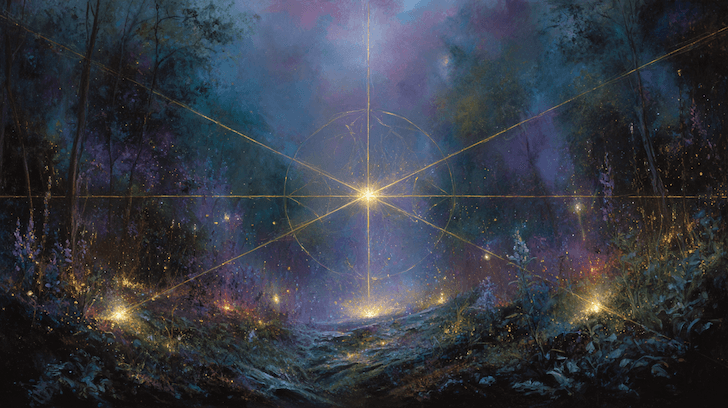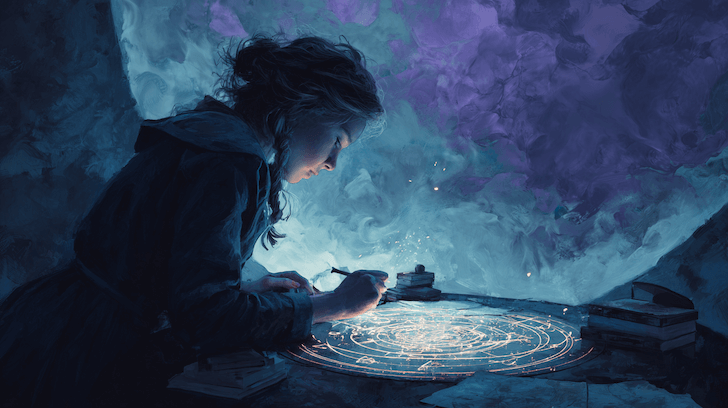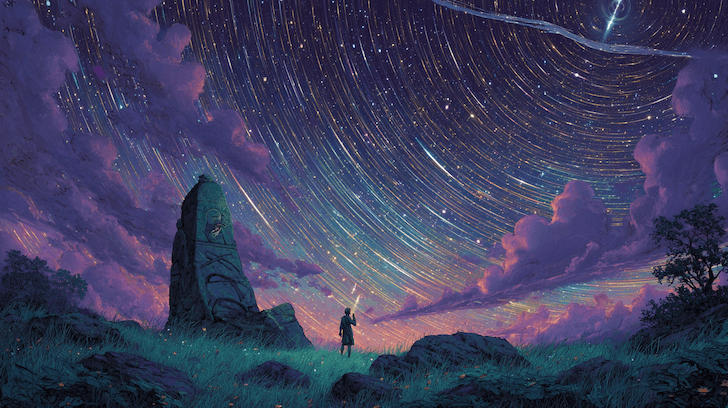Other Points in Astrology

Beyond the planets and luminaries, astrology uses several points — calculated positions that reveal how energy flows through your life. These points don’t emit light, but they define structure, fate, and personal focus. They’re the chart’s hinges and intersections — the angles, nodes, and symbolic “lots” that make interpretation personal.
These points act like lenses. Planets show energy in motion, but points show where that energy meets the world — through identity, others, vocation, fate, and timing.
The Four Angles
The angles are the backbone of the chart — they anchor it to a specific moment and place. Each corresponds to one of the four major directions and divides the chart into quadrants. Planets near these points are amplified; their influence is lived out publicly and personally.
| Angle | Meaning | Themes |
|---|---|---|
| Ascendant (AC) | The horizon rising at birth | Personality, physical presence, first impressions, instinctive response |
| Imum Coeli (IC) | Lowest point of the sky | Roots, family, ancestry, inner foundation, emotional grounding |
| Descendant (DC) | Setting horizon opposite the Ascendant | Partnerships, collaboration, projection, attraction |
| Midheaven (MC) | Highest point above the horizon | Public role, calling, legacy, reputation |
The Ascendant shows how you approach life — your style of engagement and instinctive reactions. Its ruler (the planet that rules the rising sign) acts as your chart’s guide. The Descendant reflects what you seek in others and what completes you in partnership. The IC describes where you come from — family stories, early conditioning, and your inner refuge. The Midheaven is the visible summit — career, recognition, and the impact you make in the public eye.
The Lunar Nodes
The North Node and South Node form a polarity between growth and comfort. They aren’t physical bodies but calculated points where the Moon’s orbit intersects the ecliptic. They move retrograde, completing a full cycle every 18.6 years.
| Point | Meaning | Themes |
|---|---|---|
| North Node | Path of evolution and learning | Purpose, direction, growth edge, new habits |
| South Node | Inherited experience and release | Comfort zones, talents, past-life residue, old scripts |
Together, the Nodes describe your karmic axis: where you’ve come from and where you’re headed. The North Node calls for conscious effort; the South Node feels familiar but limiting when overused. Their returns (around ages 18½, 37, 56, 75) mark recognizable chapters of change and alignment.
Part of Fortune
The Part of Fortune (Latin: Pars Fortunae) blends the Sun, Moon, and Ascendant to show where flow and natural contentment arise. It’s not about luck in the lottery sense — it’s where effort and environment align so that life moves with less resistance.
- In daytime charts (Sun above the horizon): calculated as Ascendant + Moon – Sun.
- In nighttime charts (Sun below horizon): calculated as Ascendant + Sun – Moon.
It points toward what feels wholesome, restorative, and in rhythm with your nature — the sweet spot between your light (Sun), needs (Moon), and path (Ascendant).
Part of Fortune Interpretations
Vertex
The Vertex is sometimes called the “fated point.” It sits in the western hemisphere of the chart, near the Descendant, and acts like a secondary gateway for significant encounters.
It’s not always active — but when transits or progressions touch it, experiences often feel serendipitous or karmically charged. Many astrologers associate Vertex contacts with important meetings, awakenings, or synchronistic events that alter direction.
Black Moon Lilith
Black Moon Lilith represents the lunar apogee — the point where the Moon is farthest from Earth. Symbolically, it channels independence, instinct, and defiance of conformity. Lilith exposes where you reject domestication or perform power reclamation.
- In personal charts, it shows where you won’t compromise authenticity.
- By sign, it describes the tone of raw self-expression.
- By house, it marks where taboos, intensity, or liberation surface.
Lilith transits and aspects can coincide with boundary tests, creative awakening, or periods of emotional truth-telling.
Additional Points and Lots
Other calculated points, while less emphasized, add subtle context:
- East Point: A secondary Ascendant marking natural self-expression and how others perceive your energy.
- Antivertex: Opposite the Vertex; represents conscious choice and personal agency in fated situations.
- Part of Spirit: Counterpart to the Part of Fortune — often linked to vocation and the expression of will.
- Midpoints: The halfway point between any two planets; blending functions (e.g., Sun/Moon midpoint as relationship indicator).
These points act like accent marks in interpretation — not always dominant, but revealing when a chart’s rhythm feels incomplete.
Reading Sensitive Points
Sensitive points amplify when planets conjoin or oppose them. Their orbs are tight — keep within 2–3° for relevance. Angles and Nodes are the loudest; Parts and Vertex are subtler but distinct when hit by transits or progressions.
Think of these points as coordinates on a map: the planets are the travelers, and these are the crossroads. Where they meet, something personal and defining happens — often quietly, but unmistakably.
How to Read a Birth Chart

How to Read Transits

Get Your Birth Chart
Calculate your complete astrological chart with precise astronomical data based on your birth time and location
Generate Chart